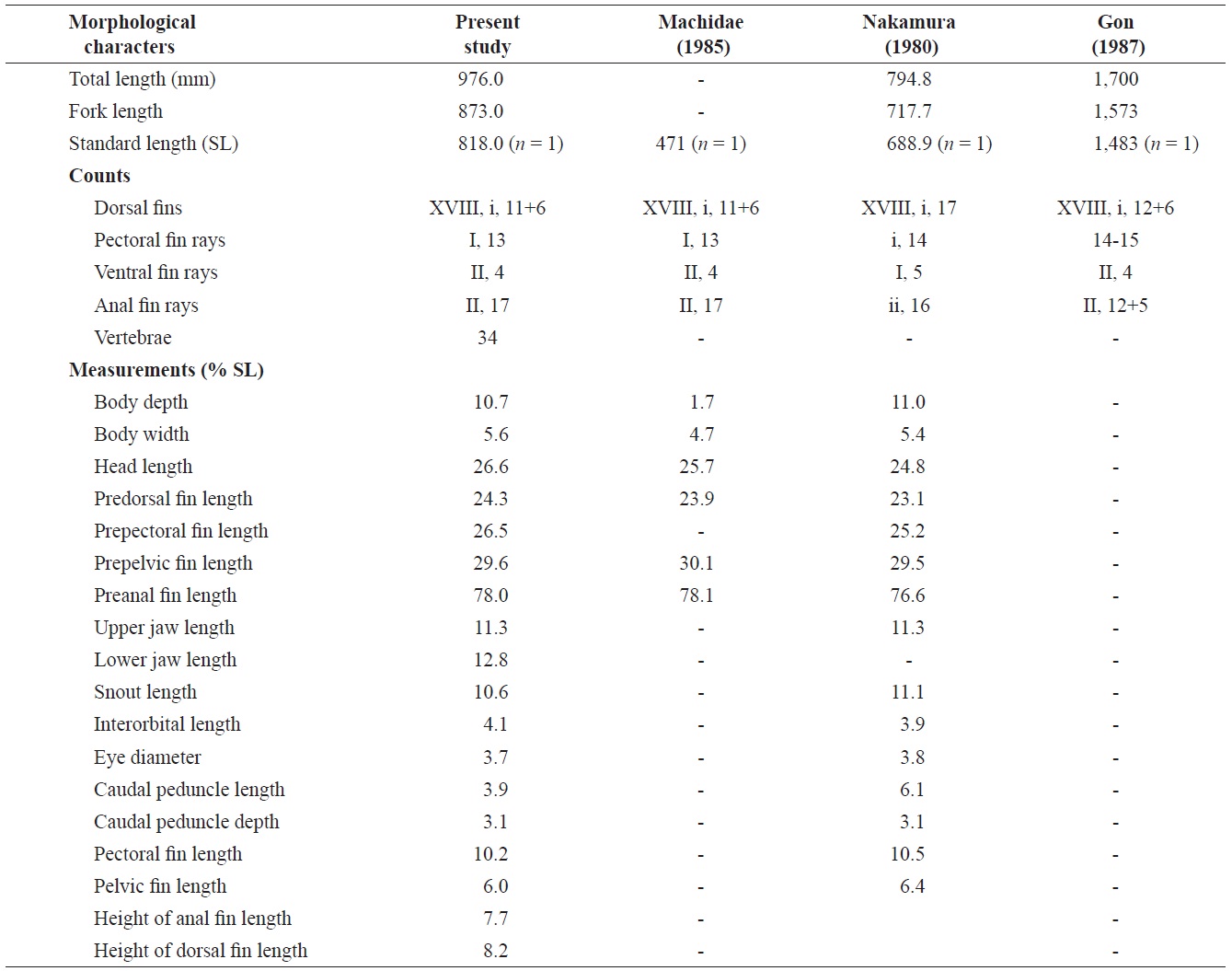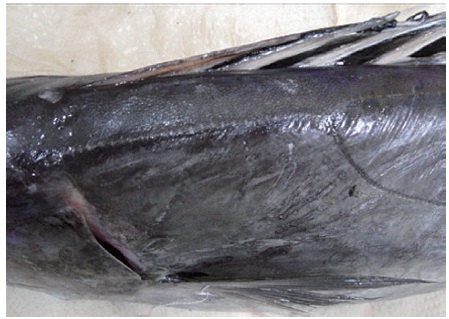



The family Gempylidae, which is comprised of 16 genera with about 24 species, is widely distributed in tropical and subtropical seas worldwide (Nelson, 2006). This family is characterized by having an oblong and compressed body, a protruding lower jaw, and isolated finlets present behind the dorsal and anal fins (Nelson, 2006). Within the family, the genus
In Korea, one species,
The specimen examined was preserved in 10% formalin for 1 month and then preserved in 80% ethanol. The morphological characters of
Thyrsitoides Fowler, 1929
(New Korean genus name: Gal-chi-ggo-chi-sok)
Thyrsitoides Fowler, 1929: 381 (type species: Thyrsitoides marleyi Fowler, 1929).
Thyrsitoides marleyi Fowler, 1929 (Table 1, Fig. 1)
(New Korean name: Gal-chi-ggo-chi)
NFRDI 20120127, 818.0 mm standard length (SL), longline, Dadaepo, Busan, Korea. 27 January 2012.
Counts and measurements of the present specimen are shown in Table 1.
Body much elongated and compressed; body covered with tiny cycloid scales; dorsal profile of head sloping gently; head large; mouth and eyes large; lower jaw sharply pointed, projecting in front of upper jaw and extending below to one-third of eye; tip of each jaw with a small cartilaginous process; three fangs (two fangs on right side and one fang on left side) of upper jaw; both jaws with a single series of canine-like, compressed teeth; no tooth on vomer; dorsal fin starts above angle of opercle, second dorsal spine slightly longer than first one; dorsal fin rays and anal fin rays opposite each; posterior dorsal and anal soft rays finlet-like connected to each other by the membrane; pelvic fin base located behind pectoral base. Lateral line starts above angle of opercle and bifurcates slightly behind forth dorsal spine (Fig. 2); upper line runs along dorsal profile of body to the point of thirteenth dorsal spine, lower line forth dorsal spine along middle of body to caudal base; caudal fin deeply forked; a keel-like process at base of upper and lower caudal fin lobes.
Color when fresh: Body entirely dark silver; first dorsal fin membranes black; pectoral, anal and caudal fins dark, but pelvic fin pale grayish.
Color in alcohol: Body dark brown above, pale silvery white below; first dorsal fin membranes black; all fins darkened.
Widely known from Indo-West Pacific Ocean: Korea (present study), Japan, Kyusyu-Palau Ridge, Taiwan, New Caledonia, New Hebrides, Malacca Straits, Andaman Sea, western Australia, around Madagascar, La Reunion, east coast of South Africa and Red Sea (Nakamura and Parin, 1993).
The present specimen was characterized by a much elongated and compressed body, branched lateral line, dark first dorsal spine membranes, and lower jaw projecting in front of upper jaw). In addition, the morphological characteristics of the present specimen agreed well with those in previous reports of
[Table 1.] Comparison of counts and measurements of Thyrsitoides marleyi

Comparison of counts and measurements of Thyrsitoides marleyi



